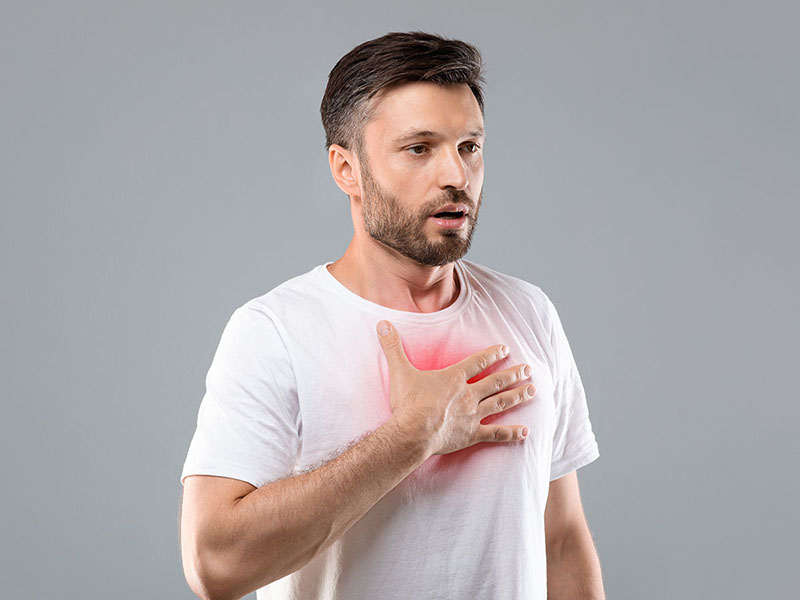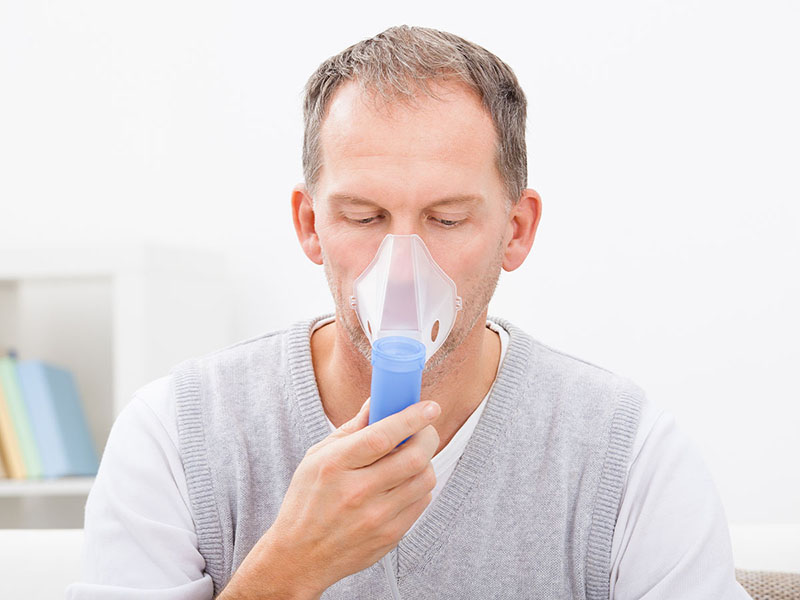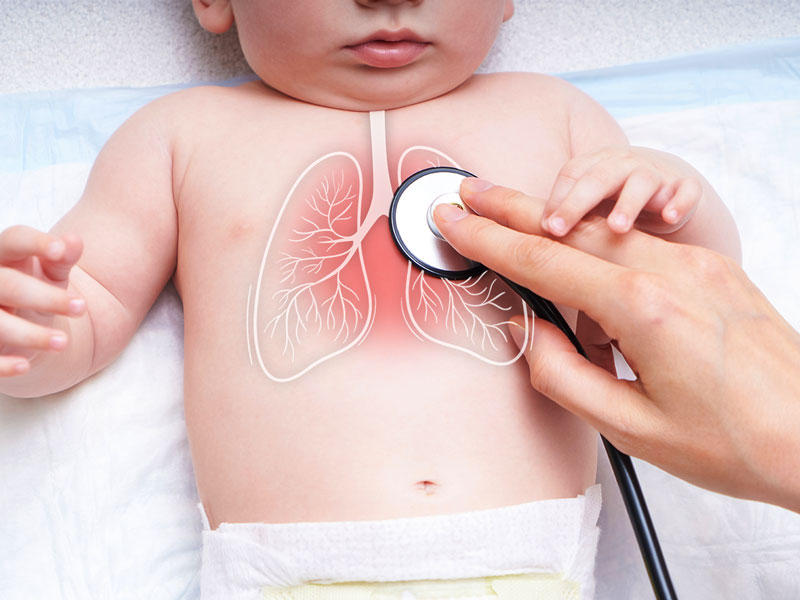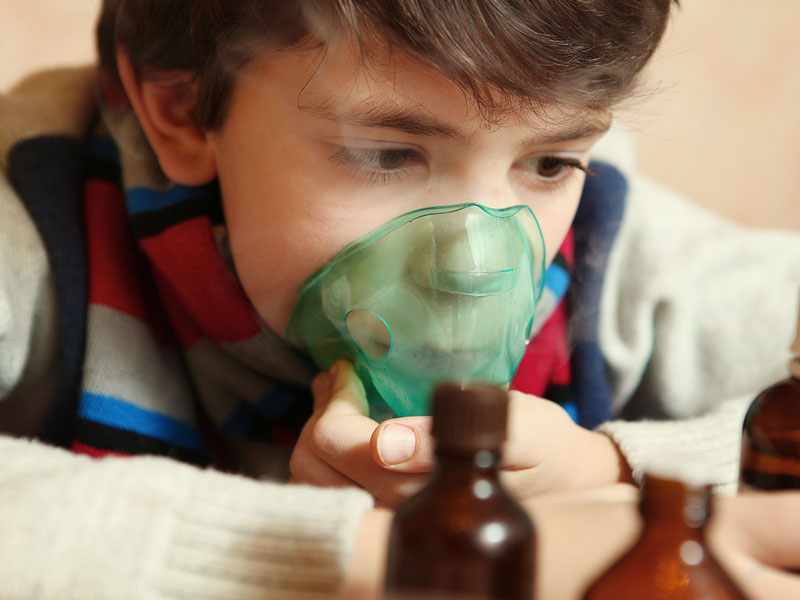Halotherapy – How Does Salt Therapy Work?
Salt therapy is designed first and foremost to replicate natural salt caves found all over the world. When applied, this therapy is able to help with allergies, inflammation, and congestion, which can reduce the symptoms of many health conditions. Salt therapy can be beneficial for the airways as well as the skin. It’s also important to understand that this therapy works perfectly well alongside medications, which means that you won’t need to stop taking any of your medications while the therapy is ongoing. Once the symptoms of your health condition are relieved, the medicine that you’re taking for the issue should be much more effective.
During the therapy, you’ll sit in a room that’s filled with tiny salt particles in the air, which occurs when a halogenerator device grinds up the salt and disperses it as an aerosol. When you inhale these particles, your respiratory system will be tended to. The particles will also land on your exposed skin, which can assist with the relief of skin conditions like eczema. This is a complementary treatment that must be used alongside the medication that you’re taking.
Salt is known to be a natural anti-inflammatory, antibacterial, antihistamine, and antiviral substance. When the salt particles are inhaled, the particles will coat the airways before drawing out fluid from the damaged airways. Once this fluid is mixed with salt, it will be able to break up any congestion or relieve allergic reactions.
What does the treatment area look like?
The room that’s used for salt therapy is outfitted with a micro-climate that’s similar to a salt mine found underground. The floor that you sit on will be covered entirely with salt. During the therapy, you will have some peaceful and tranquil music to listen to while you relax. The salt will then be dispersed into the air, which is the beginning of the treatment session. Each session lasts around 45 minutes.
What should the results be?
Once you attend a salt therapy session, breathing should be easier. The same is true for such symptoms as shortness of breath, sneezing, and coughing. Many people who undergo this therapy also benefit from sleeping better, which results in more energy the following day. Keep in mind that the salt works gradually by dislodging mucus and other particles found in your airways, which means that coughing is normal following the treatment. If you’re attempting to treat a skin condition, the irritation and inflammation of your skin should be reduced.
Can salt therapy be administered to children?
This therapy can be obtained by any individual regardless of their age. For younger children, the room will be outfitted with bean bags, toys, and even a TV set to ensure that the child can relax. As for adults, soothing music is typically provided to help with relaxation.
Is salt therapy safe?
Salt therapy is considered to be 100% safe, natural, and drug-free, which helps to provide long-term relief from an array of health conditions. Once the symptoms of your condition are relieved from salt therapy, the medication that you take should be more effective.

Asthma
read more
What Is Asthma?
Asthma can be a very serious condition that directly affects the lungs as well as the airways that connect to the lungs. When a person suffers from asthma, they will experience occasional asthma attacks that cause difficulties with breathing and wheezing. These attacks occur when the airways and lungs become overly sensitive for some reason. The airways will then become inflamed and eventually clogged up, which can make it difficult to breathe properly. Severe asthma attacks may require immediate medical attention or quick use of an inhaler to prevent serious complications. An asthmatic will invariably pant while an asthma attack is ongoing because of how narrow the airways become when an attack is triggered.
How Does Asthma Occur?
This is a disease that can develop within a person at all ages. There are numerous reasons why your airways can become inflamed, which may include such triggers as cold weather, dust, strenuous exercise, and pet fur or dander. However, there’s also a chance that the attack you go through will begin with no apparent trigger. When your airways become inflamed, the cells that are meant to fight diseases and ward off infections will accumulate and build up in your airways, which leads to swelling around the lungs. It’s also possible for the airways to become obstructed if the muscles around the lungs spasm or tighten for some reason. A spasm prevents air from circulating properly throughout the lungs. Another common cause of asthma is mucus. This is a thick substance that can narrow and clog the airways, which will make it more difficult to breathe until the airways have cleared.
Why You Should Consider Salt Therapy
Salt therapy is a highly beneficial treatment that is able to relieve everything from allergies and inflammation to congestion that affects the airways. Since asthma is typically caused by inflammation of the airways, salt therapy may be able to provide relief from these symptoms. When you sit in a salt room, a dry salt aerosol will be spread throughout the room, which you will directly inhale into your lungs. The salt particles will coat the airways and begin getting rid of the inflammation. Once this inflammation has diminished, the medications that you take for your asthma should be more effective.

Hay Fever
read more
Hay fever is the common term referring to allergic rhinitis, caused by seasonal exposure to pollen. Allergic rhinitis is a runny or blocked nose and/or sneezing and watery eyes and is triggered by an allergic reaction. Allergic rhinitis can have many triggers and can occur seasonally or throughout the year. Allergic rhinitis is one of the commonest respiratory conditions in Australia. Unlike many health conditions, allergic rhinitis is more common in those of working age than it is in the young and elderly.
When a hay fever or allergy sufferer sits in the salt rooms, they are exposed to a dry salt aerosol. The minute size of the microscopic salt particles enables it to be inhaled through the nose, into the sinuses and deep into the lungs to break up congestion and draw out inflammation. As a natural antihistamine, salt can help alleviate the allergy and help reduce irritation.

Cold & Flu
read more
What Are the Cold and Flu Diseases?
A standard cold is a viral disease that is infectious and develops within the upper respiratory system, which mostly means that your nose will be affected. The symptoms that you experience from a cold should dissipate in around seven days. A flu is a more serious viral infection that attacks the throat, lungs, and nose. You should recover from the flu in anywhere from a few days to upwards of two weeks as long as you don’t suffer from any further health complications.
Primary Signs and Symptoms
Both the common cold and the flu have very similar signs and symptoms between them. A standard cold will typically be accompanied by a runny nose, a cough, a sore throat, and nasal congestion. You might also suffer from additional symptoms like fatigue, headaches, and muscle aches. A fever will usually not occur in adults but can develop among infants and younger children. As for influenza, the primary symptoms include severe coughing and a fever. The remaining symptoms are very similar to the ones that you might experience with a cold.
How Salt Therapy Can Help
The cold and flu are two additional respiratory ailments that can see extensive benefits from salt therapy. The minute salt particles that you inhale will be able to effectively get rid of any built-up toxins and allergens, which should make for a marked improvement in your condition. By clearing out your airways with salt therapy, any congestion that you’re experiencing because of your cold or the flu should be reduced or eliminated altogether.

Eczema
read more
What Is Eczema?
This is a common skin condition that can occur within all age groups. The severity of this condition varies substantially. More mild cases of eczema cause the skin to become itchy, hot, and dry while the severe cases lead to skin that becomes raw and broken, which will also cause bleeding. Despite having an odd appearance, this skin condition is not contagious. If you’ve been diagnosed with eczema, your symptoms can be reduced in severity. However, eczema cannot be wholly cured, which means that flare-ups are always possible.
Types of Eczema
There are a variety of different types of eczema that you could be diagnosed with. The most common type of eczema is atopic eczema, which is hereditary and is usually linked with hay fever and asthma. You could also develop irritant contact dermatitis, which is caused by regular contact with standard chemicals and detergents. Over time, this contact can lead to skin irritation.
A third type of eczema is allergic contact dermatitis, which occurs when the immune system reacts negatively to a substance that contacts the skin. This is an allergic reaction that usually requires multiple instances of contact for the reaction to occur. Some of the more common substances that cause this form of eczema include various perfumes, rubber, and nickel. The final type of eczema is infantile seborrheic eczema, which mainly affects infants under a year old. The cause of this eczema is unknown but will result in scaly patches around the scalp that spread quickly.
Salt Therapy for Eczema
When your skin is exposed to the small salt particles during salt therapy, the healthy bacteria found on your skin will strengthen. Salt is known to have anti-inflammatory and antibacterial properties, which means that the inflammation that occurs with eczema should be effectively reduced. Salt will also help stimulate the regenerative properties of the skin, which helps with healing.

Psoriasis
read more
What is Psoriasis?
Psoriasis is a skin disease that’s considered to be chronic, which means that it’s long-lasting. This condition will typically display itself as patches of raised and reddened skin along with white flakes of skin. Mild cases of psoriasis can sometimes be difficult to notice while severe cases of psoriasis cover multiple areas of the body. Unlike some other skin conditions, psoriasis can’t spread from person to person.
Main Causes of Psoriasis
There are currently no known causes of psoriasis. However, it’s believed that some faulty functions of the immune systems can trigger it. When certain signals in the immune system become faulty, skin cells will grow too fast and be pushed to the surface of the body because they can’t be shed as quickly as usual.
Psoriasis Types
There are a variety of different types of psoriasis like guttate psoriasis, plaque psoriasis, psoriatic arthritis, and inverse psoriasis. These types differ substantially from one another. Guttate psoriasis usually affects children and adolescents and results in a sore throat. Plaque psoriasis makes up around 80% of all cases of psoriasis and can develop in any area of the body. Psoriatic arthritis is a form of arthritis that can develop when an individual suffers from psoriasis while inverse psoriasis mainly affects the armpits or other skin folds around the breasts, genitals, groin, or buttocks.
Advantages of Salt Therapy
Salt therapy can substantially reduce the symptoms associated with psoriasis by getting rid of the inflammation that causes this skin condition. While you can’t cure psoriasis entirely, the anti-inflammatory properties of salt can bolster the protective properties of the skin while also improving the amount of good bacteria on your skin.

Sinusitis
read more
What Is Sinusitis?
Sinusitis is a condition that occurs when the inner lining of your sinuses becomes swollen. The sinuses are small spaces in your face where air passes through and mucus drains from. When sinusitis occurs, the swelling will invariably block the openings of the sinuses, which prevents mucus from draining into the nose. Pressure will then build up, which can lead to pain. Sinusitis usually feels like a standard head cold and should be relieved with some minor treatments such as salt therapy. If the condition is severe, surgery may be needed.
What Is the Function of the Mucous Membrane?
The mucous membrane found within the sinuses and nose is essentially an air filter that cleans, warms, and moistens the air. This membrane works by creating a sticky mucus that collects any virus, bacteria, or smoke particles that could have been in the air. The small cilia hairs in the membrane push this mucus along until it is expelled from the nose or mouth. If the openings of the sinuses are blocked, the cilia will be unable to properly move the mucus into the nose.
How Salt Therapy May Help
Salt therapy has proven to be highly effective at getting rid of the congestion that can block airways such as the sinuses. When these salt particles are inhaled and are mixed with liquid from the airways, the resulting saltwater should clear out the blocked passageways into the sinuses, which means that you should experience quick relief from your symptoms.

Sleep & Snoring
read more
What Is Snoring?
Snoring is a symptom that occurs when your airways become blocked while sleeping. The sound that’s produced when snoring is simply a vibration of your respiratory structures that occurs every time you breathe. Snoring can either be soft or loud. In many cases, the presence of snoring is a sign that you may be suffering from a sleep disorder known as obstructive sleep apnoea.
How Salt Therapy Can Treat Snoring
Snoring occurs while you sleep because your airways are blocked for any number of reasons. Salt therapy is beneficial for this health issue because it’s able to clear your airways of any obstructions or congestion that’s causing your snoring. The relief that you experience for your snoring should be almost immediate with salt therapy.

Stress & Anxiety
read more

Emphysema/COPD
read more
What Is Emphysema/COPD?
Emphysema or COPD is a condition that occurs when the air sacs in the lungs become too large. When this condition develops, the lungs won’t be able to expand and collapse like they’re supposed to, which will make it difficult to breathe in and breathe out. Children who experience emphysema or COPD typically develop the condition because of a congenital abnormality. The severity of the condition depends on the individual. In some cases, it may be so minor that it doesn’t even register as an inconvenience. More severe cases will make it very difficult to breathe, which can be dangerous to a person’s overall health. People who experience this condition might also suffer from black lung disease.
How Does This Condition Occur?
When the air sacs in the lungs become enlarged, the walls of these air sacs will deteriorate, which leads to problems with respiratory function such as breathing difficulties. These air sacs convert oxygen from the air into carbon dioxide that goes into the bloodstream. Unfortunately, the walls of these air sacs are relatively thin, which means that they can be readily damaged. This damage cannot be reversed. As these sacs are permanently destroyed, a shortness of breath will occur.
How Salt Therapy Might Help
While salt therapy is unable to directly reverse the damage that has been done to the air sacs in your lungs, it is able to relieve any inflammation or congestion that is currently affecting your lungs and airways. By opening up your lungs as much as possible with the help of the salt particles provided during this therapy, the shortness of breath that you experience with emphysema and COPD should improve.

Cystic Fibrosis
read more
What Is Cystic Fibrosis?
Cystic fibrosis is a common type of inherited disease that primarily affects children and adolescents. This condition is notable for being accompanied by chronic infections that recur regularly. When suffering from this condition, the airways will become clogged. Additional symptoms will likely occur within the reproductive and digestive systems. The reason that cystic fibrosis affects many areas of the body is because it attacks all kinds of tissues that produce mucus. The epithelial cells that line such areas as the liver, pancreas, and lungs are also adversely affected. Once this condition occurs, the mucus produced throughout your body becomes much thicker than it should, which damages the surrounding tissues and clogs airways. The clogged airways lead to the development of bacteria and eventual infections, which will likely require treatment.
Symptoms of This Condition
The primary symptoms that are associated with cystic fibrosis include the production of thick and sticky mucus as well as salty sweat.
Salt Therapy Benefits for Cystic Fibrosis
Salt therapy helps with the treatment of cystic fibrosis because of how the salt particles line the airways and other areas throughout the respiratory system. Once this salt has been inhaled, the nutrients within the salt particles will start to eliminate any bacteria and other harmful particles that have built up throughout the body. Any clogs in the airways that are caused by the thick mucus should also be cleared.

Pneumonia
read more
What Is Pneumonia?
Pneumonia results in the lungs becoming inflamed, which is usually caused by some form of infection. When your immune system has become weakened because of a prior sickness or a similar issue, pneumonia will likely develop. This health condition occurs most often following a case of the flu or an upper respiratory tract infection. The two types of pneumonia include bronchial and lobar. Bronchial pneumonia is the more severe type that creates issues within several patches of either one or both of your lungs. Lobar pneumonia results from an infection invading one patch or lobe of your lung.
Primary Causes of Pneumonia
Pneumonia is typically caused by a severe cold or flu but can be brought about when your immune system has become weakened. You will likely experience chills, coughing, and a fever. If your immune system is too weak, this disease can be life-threatening. A viral or bacterial infection is commonly the direct cause of pneumonia, both of which are brought about by other factors. It’s also possible for certain types of parasites or fungi to trigger this disease.
Benefits of Salt Therapy for Pneumonia
The primary symptom of pneumonia is coughing. Since salt therapy sends small salt particles into the airways to clean them out, the main symptoms of pneumonia should be reduced when you obtain this therapy. You will need to inhale deeply during the treatment session to ensure that the treatment works as intended.

Pulmonary Fibrosis
read more
What Is Pulmonary Fibrosis?
Pulmonary fibrosis is a health condition that’s characterized by high amounts of scarring in either one or both lungs. Over time, the healthy air sacs within your lungs will be replaced by unhealthy scar tissue. As the amount of scar tissue grows, the ability of your lungs to transfer oxygen into your bloodstream will be reduced substantially, which can be difficult to manage.
Symptoms of This Condition
While pulmonary fibrosis is a serious condition of the respiratory system, many of the symptoms that you experience will be minor in the early stages of this condition. The main symptoms that you could go through include a shortness of breath, coughing, weakness, and a general fatigue. You might also experience some discomfort in your chest that doesn’t dissipate over time. A rapid loss of weight and a loss of appetite are two additional symptoms that can occur with pulmonary fibrosis.
How Salt Therapy Can Help
Salt therapy can benefit your case of pulmonary fibrosis by sending soothing salt particles in your airways and your entire respiratory system. These salt particles will cling to the walls of your airways before taking water from them. Once this water has effectively mixed with the salt, the liquid will clear your airways of harmful particles, allergens, inflammation, and congestion, which should be able to relieve the shortness of breath and coughing that you’re experiencing with pulmonary fibrosis. Keep in mind that this therapy should be administered alongside medication and other forms of treatment if you want to substantially mitigate your symptoms.

Bronchiectasis / Bronchitis
read more
What Is Bronchiectasis?
Bronchiectasis is a condition that occurs when a person’s bronchial tubes become distended and enlarged. When these tubes grow in size, they will form pockets wherein an infection can develop. The walls of the bronchial tubes are also damaged, which creates issues with the comprehensive cleaning system within the lungs. When healthy, the bronchial tubes are covered with very small hairs known as cilia that help to get rid of extra mucus, dust, and germs. The presence of bronchiectasis means that the cilia hairs are destroyed and the bronchial tubes can no longer get rid of unwanted substances. Over time, bacteria, mucus, and other substances will build up and possibly lead to an infection, which can be difficult to get rid of.
Symptoms Associated With Bronchiectasis
The most common symptom associated with bronchiectasis is a standard cough that occurs daily and can last for many months and even years. Some of the additional symptoms that you will experience when suffering from bronchiectasis include:
- Chest pain
- A shortness of breath
- Regular infections in the lungs
- Ample amounts of phlegm on a daily basis
- Weight loss
- Fatigue
- Coughing up bloody mucus
- How Salt Therapy Can Treat This Condition
Salt therapy can be beneficial for the treatment of bronchiectasis because of how this therapy affects the airways. You will likely experience relief from such bronchiectasis symptoms as allergies, congestion, and inflammation. The salt room that you sit in will expose you to dry salt aerosol, which is able to spread throughout the entirety of your lungs when you inhale it. The tiny salt particles will then line the bronchial tubes and begin the healing process. These particles are comprised of numerous minerals and substances that aid the healing process. By getting rid of some of the symptoms you’re going through, any medications that you’re taking for the condition as a whole should be more effective following the application of salt therapy.
What Is Bronchitis?
Bronchitis is a common condition that results from inflammation within your bronchial tubes. These tubes are airways that travel from your windpipe to your lungs. Coughing, shortness of breath, and chest congestion are very common symptoms associated with this condition.
Main Causes of Bronchitis
This condition is typically caused by a viral infection. In this case, the infection will need to travel through your body before you can get rid of the symptoms. However, bronchitis can also be caused by the inhalation of dust or chemical pollutants, smoking, or bacteria. The main viruses that lead to the development of bronchitis include influenza A and B. The type of bacteria that typically leads to bronchitis is that of mycoplasma pneumoniae.
It’s also important to understand that there are two basic types of bronchitis, which include an acute type and a chronic type. Acute bronchitis usually lasts for around 10 days and will oftentimes begin during or after the flu. This type of bronchitis will also occur if you’re regularly around damaging fumes or if you currently smoke. As for chronic bronchitis, this form of bronchitis is a long-term version that is caused when excessive amounts of mucus secretion occur within the bronchial tubes. A chronic bout of bronchitis will last for three months or longer and may even recur every year.
Benefits of Salt Therapy for Bronchitis
Salt therapy is able to assist with the treatment of bronchitis by reducing the inflammation and congestion in your airways. As is the case with the bronchiectasis condition, the tiny particles of salt that you inhale during this therapy will coat your airways and provide relief from the symptoms that you’re going through, which should help you get rid of this condition for good.

Bronchiolitis
read more
What Is Bronchiolitis?
Bronchiolitis is a viral infection of the bronchioles (small airways) in a baby or toddler. The bronchioles are an important part of the respiratory system, they are the passages through which air is directed from the nose and mouth to the alveoli (air sacs) at the end of the respiratory system.
Salt Therapy can assist in the treatment of Bronchiolitis by breaking up congestion and reducing inflammation IN THE BRONCHIOLES. The minute particles of salt can reach the deepest parts of the respiratory system where the bronchioles connect to the alveoli to break up congestion, draw out inflammation and dehydrate the viral infection.

Croup
read more
What Is Croup?
Croup is a condition caused by a viral infection. The virus leads to swelling of the larynx and trachea (voice box and windpipe). This swelling is a result of inflammation and congestion, making the airway narrower and difficult to breathe. Typically, Children are the most impacted by Croup with their voices sounding high pitched and scratchy along with a “bark like” cough.
Children suffering from Croup find it difficult to breathe and to cough up the congestion due to the inflamed airways. Salt Therapy can help provide relief from Croup by breaking up the congestion and making it a bit easier to move the congestion out the airway, allowing the salt to draw out the inflammation and dehydrate the viral infection.
Additional Research (pdf downloads or read online)
Discover why everyone’s falling in love with Breathe Better Salt Rooms
We can design a complimentary Management Plan consultation with one of our Salt Therapists and you will discover how salt therapy may benefit you.
